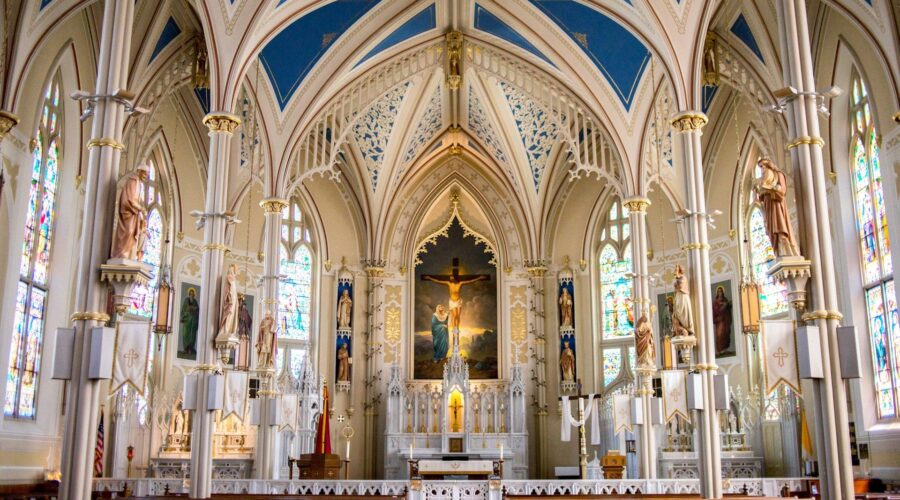Your cart is currently empty!
Discover the Rich History and Significance of St. George Catholic Church

Origins and Establishment
St. George Catholic Church, a cornerstone of the Catholic community in England, traces its origins back to the 19th century. The construction of the church commenced in 1830 under the leadership of Father Patrick Baines, who envisioned a grand sanctuary that would cater to the growing number of Catholics in the area.
The church was designed by renowned architect Augustus Welby Pugin, renowned for his revival of Gothic architecture. The cornerstone was laid in 1834, and the church was finally consecrated in 1840.
Architectural Marvel
St. George Catholic Church stands as a testament to Pugin’s architectural brilliance. The building is an exquisite example of the Gothic Revival style, characterized by its pointed arches, ribbed vaults, and intricate stained-glass windows.
Exterior Features
- Imposing facade with a central bell tower
- Gothic arches and pinnacles
- Intricate stone carvings depicting religious scenes
Interior Features
- Soaring nave and chancel with ribbed vaults
- Elaborate stained-glass windows depicting scenes from the life of Christ
- Marble altar and pulpit
Community and Worship
Beyond its architectural significance, St. George Catholic Church has played a pivotal role in the spiritual life of the local community.
The church offers a variety of services, including daily Mass, Sunday Mass, and special services for holidays and sacraments. It is also home to various ministries and organizations that provide support and outreach to the community.
Parish Activities
- Prayer groups and Bible studies
- Youth and adult education programs
- Social events and community gatherings
Historical Significance
St. George Catholic Church has witnessed numerous historical moments and has been associated with influential figures.
- In 1840, Cardinal Nicholas Wiseman, the first Archbishop of Westminster, visited and celebrated Mass at the church.
- The church was a refuge for Irish immigrants during the Great Famine.
- It was a meeting place for social reformers and activists during the Victorian era.
Recognition and Preservation
In recognition of its historical and architectural value, St. George Catholic Church was designated a Grade II* listed building by English Heritage in 1945.
The church has been meticulously preserved over the years, ensuring that its grandeur and significance will continue to be appreciated by generations to come.
Visiting Information
St. George Catholic Church is located at 76 Marsh Lane, Bootle, Merseyside, L20 4RL.
The church is open to the public during the following hours:
| Day | Hours |
|---|---|
| Monday – Friday | 9:00 AM – 5:00 PM |
| Saturday | 9:00 AM – 4:00 PM |
| Sunday | 9:00 AM – 1:00 PM |
Visitors are welcome to explore the church’s stunning architecture, attend services, or simply soak up the peaceful atmosphere.
Conclusion
St. George Catholic Church is a remarkable architectural treasure and a vibrant spiritual center that has played a significant role in the religious, social, and historical fabric of England. Its beauty and legacy continue to inspire and captivate people today.
Whether you are a parishioner, a history buff, or simply an admirer of Gothic architecture, a visit to St. George Catholic Church is an experience that will leave a lasting impression.